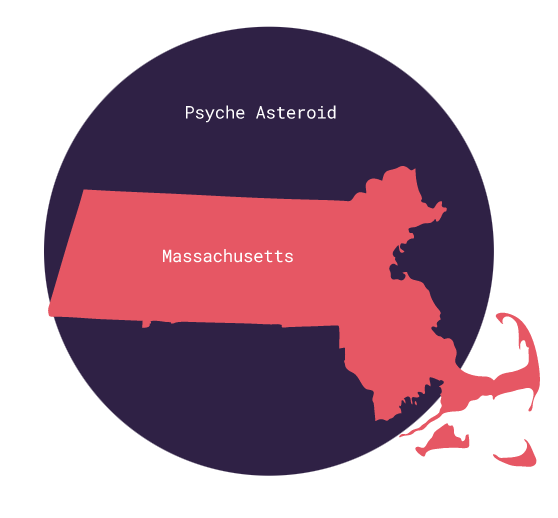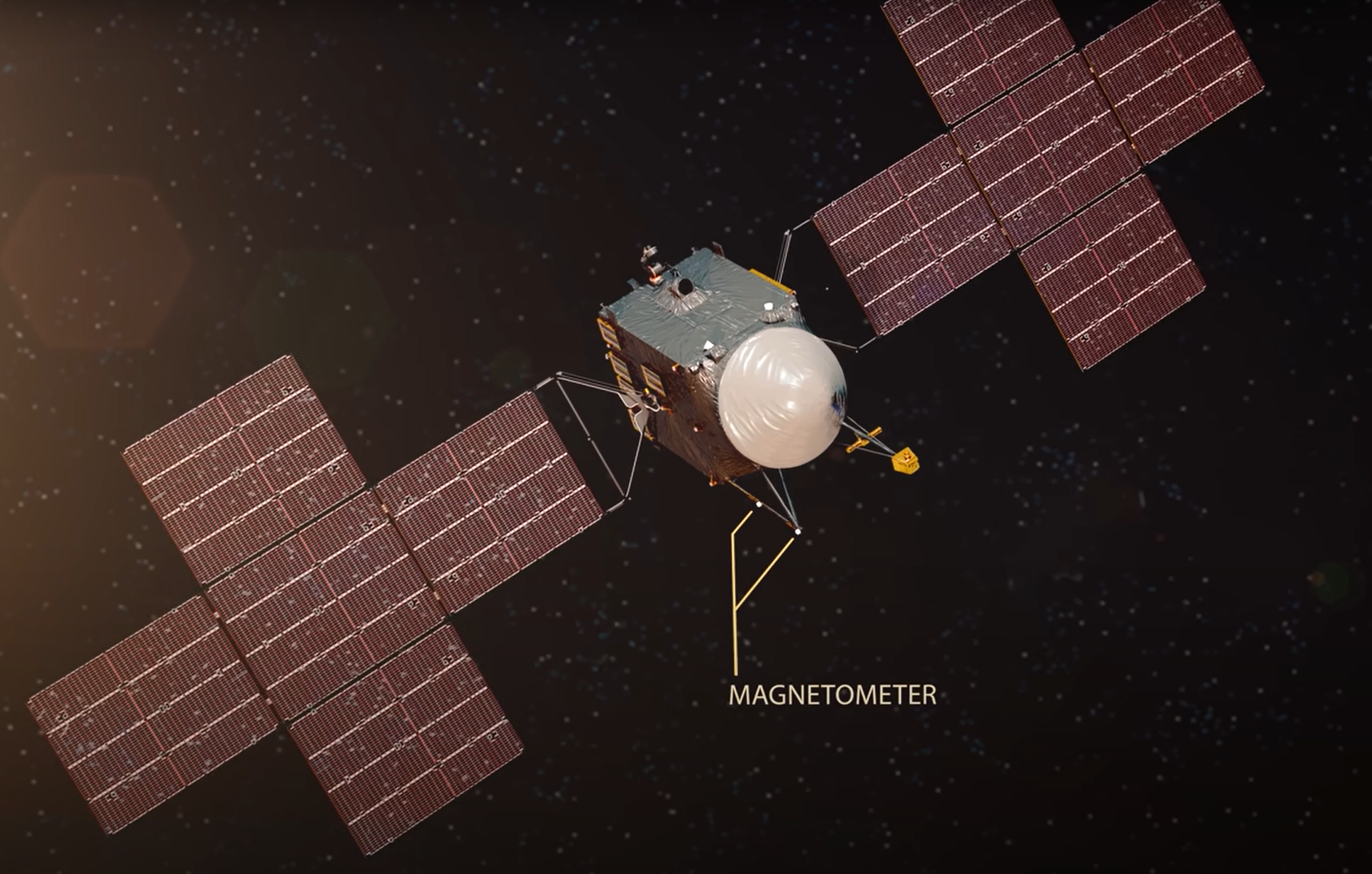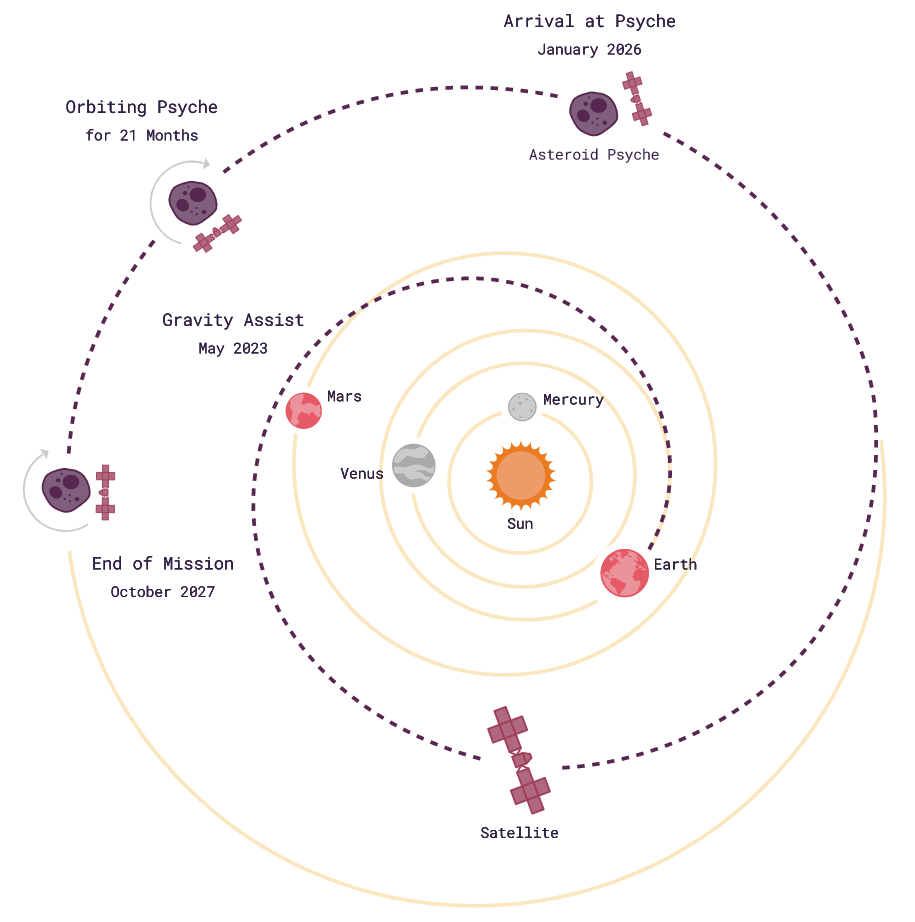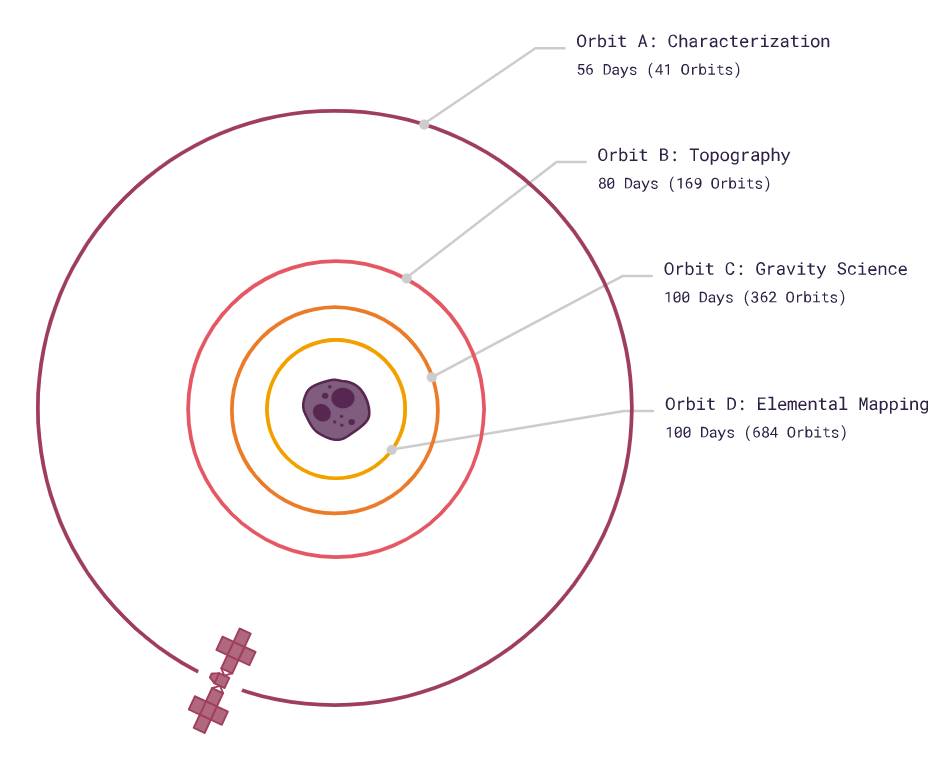Ben Weiss on the Mission to Psyche
Listen to the podcast here or wherever you listen to podcasts.
Scroll down for illustrations that support the podcast.
Ben Weiss is Deputy Principal Investigator and Magnetometry Investigation Lead on the Psyche mission. He is a Professor of Planetary Sciences at the Massachusetts Institute of Technology (MIT). His research focuses on the formation, evolution, and history of the terrestrial planets and small bodies, such as the asteroids. He has studied samples of extraterrestrial bodies that land on Earth as meteorites. He is especially interested in their remnant magnetism as a clue to where they originate and how their parent bodies formed.
Podcast Illustrations
The Psyche Asteroid
Artist’s impression of Psyche, showing a heavily cratered, metal-rich surface. It is thought that Pysche is largely composed of iron and nickel, which is similar to the composition of the Earth’s core.
Courtesy of Peter Rubin
If Psyche were a perfect sphere, it would have a diameter of 140 miles (226 kilometers), or about the length of the State of Massachusetts (leaving out Cape Cod). It is estimated to have a surface area of about 64,000 square miles, or approximately 165,800 square kilometers.
Courtesy of Arizona State University
Psyche follows an orbit in the outer part of the main asteroid belt, at an average distance from the Sun of three astronomical units (AU); Earth orbits at 1 AU.
Radar image of Psyche obtained with the 305-meter-diameter Arecibo radio telescope in 2017. The image provides evidence for two 50-70-km-wide depressions near its south pole, which we interpret as giant craters.
Shepard et al. (2017), Icarus 281, 388
Psyche Formation Scenarios
Interior view of the Earth extending to the solid metallic inner core (gray innermost sphere). With a diameter of around 1,500 miles (2,500 km), the inner core is surrounded by molten liquid iron, the outer core (orange sphere). The liquid and solid metal cores lie beneath the solid silicate rock mantle of the Earth (green shading). As Ben Weiss explains in the podcast, Psyche may be a core of a body whose rocky outer mantle was blasted off during a major collision with another body. A video modeling this “hit-and-run” scenario is shown below.
Edward Garnero/ASU
This video models the “hit-and-run” scenario for Psyche’s formation. Such collisions were more common in the early solar system.
The Psyche Spacecraft
The Psyche spacecraft has to undergo rigorous testing to ensure it can operate in the extreme conditions it will face on its trip. Here it is shown on its way to the vacuum chamber at NASA’s Jet Propulasion Laboratory in Southern California.
Courtesy of NASA/JPL-Caltech
Artist’s impression of the Psyche spacecraft with its solar panels deployed, showing the location of the magnetometer. This instrument is composed of two identical high-sensitivity magnetic field sensors located at the middle and outer end of a 6-foot (2-meter) boom on the spacecraft. Although the spacecraft was designed to create the smallest possible magnetic field of its own, the magnetometer’s boom mounting minimizes the effect of any such field, however small. The magnetometer team is based at MIT and the Technical University of Denmark.
Courtesy of NASA/JPL-Caltech
Artist’s impression of the Psyche spacecraft in a low orbit over the surface of the asteroid. Although it is difficult to maintain stable low orbits, the resolution of the images and magnetic data captured by the insturments on board improve as the spacecraft moves closer to the surface.
Courtesy of NASA/JPL-Caltech
This run simulates a non-conducting body with a weak magnetic field of about 145 nT on its surface. By comparison, the surface magnetic field of the Earth is 30-60 μT, about 200-400 times stronger. The solar wind compresses the field on the upstream side of the body.
In this run, the body’s magnetic field is four times stronger than in the run to the left.
A highly conducting body is simulated here with no magnetic field of its own.
Computer simulation of the magnetic field around the Psyche asteroid in the presence of a solar wind flowing from the right. The colors represent field strength, from red (strongest) to purple (weakest). Such models will help us interpret the magnetic field measurements performed by the spacecraft magnetometer as it approaches and then orbits the asteroid. If a large coherent dipole magnetic field is detected around Psyche, the structure of its magnetosphere might be similar to the first and second simulations above (left and center). In contrast, if the magnetometer does not observe a dipole magnetic field structure, Psyche may have a metallic and conductive body, which would perturb the magnetic field around Psyche in the manner shown in the third run (right).
Fatemi S. et al. (2017), Geophysical Research Letters 45,39
The Psyche spacecraft is expected to launch on August 1, 2022, and travel to the asteroid using solar-electric low-thrust propulsion, arriving in 2026. In 2023, it will fly by Mars, where it will undergo a gravity-assist to speed it up. After arrival, the mission plan calls for 21 months spent at the asteroid, mapping it and studying its properties. If funding is forthcoming and the spacecraft continues to function, the mission may be extended, though it may have insufficient fuel left to visit another body.
Courtesy of Arizona Sate University
Once the spacecraft arrives at the asteroid in 2026, the scientific observations will be conducted from from four staging orbits, which will become successively closer. In its lowest orbit, the spacecraft will be very close — only 80 km above the asteroid’s surface, which is less than the body’s radius.
The enormous number of recently discovered exoplanets, especially the Super-Earths, helps us position Psyche within the range of possible planetary body types. This may help us determine which of the three formation scenarios for Psyche discussed in the podcast is the most likely.
NASA/JPL-Caltech















